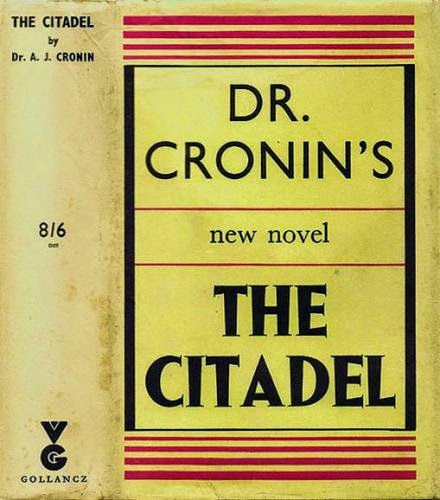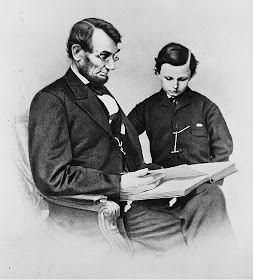Todd Mason is assembling the links for Friday’s Forgotten Books at his blog Sweet Freedom, in the absence of Patti Abbott who usually does the honours at Pattinase.
Ray Bradbury writes like a poet, which is not surprising as he has admitted to being influenced by his favourite poets and reading poetry every day of his life. The Fog Horn, a science fiction story he wrote in 1951, is a good example of his lyrical prose. Consider this passage.
“Sounds like an animal, don’t it?” McDunn nodded to himself. “A big lonely animal crying in the night. Sitting here on the edge of ten billion years calling out to the Deeps, I’m here, I’m here, I’m here. And the Deeps do answer, yes, they do.”
The Fog Horn appears to enjoy a cult status among Bradbury's many stories. It is the first one in his collection The Golden Apples of the Sun. It was made into a film called The Beast from 20,000 Fathoms, 1953, which incidentally was the original title till the author changed it. It is said to have been originally published in The Saturday Evening Post, 1951, though at least one site attributed its first appearance in Argosy the same year. The story has been adapted for plays, comics, and an animated series, and it even influenced a Star Trek episode.
Ray Bradbury writes like a poet, which is not surprising as he has admitted to being influenced by his favourite poets and reading poetry every day of his life. The Fog Horn, a science fiction story he wrote in 1951, is a good example of his lyrical prose. Consider this passage.
“Sounds like an animal, don’t it?” McDunn nodded to himself. “A big lonely animal crying in the night. Sitting here on the edge of ten billion years calling out to the Deeps, I’m here, I’m here, I’m here. And the Deeps do answer, yes, they do.”
The “lonely animal” is a sea monster which is attracted to the “deep cry” of a foghorn in a remote lighthouse. The mysterious giant—a Loch Ness or a Godzilla or a dinosaur of some sort—comes out of the deep sea on the same night once a year to visit the lighthouse and cry out in unison with the foghorn.
But things don’t go as planned on that fateful night, three years later, when McDunn, the veteran, and Johnny, his junior and narrator of this story, lie in wait in the high tower. When the monster comes out of the sea, in the dark and stormy night, and hears the foghorn blow, it answers back. Here, Bradbury’s description is again poetic.
“A cry came across a million years of water and mist. A cry so anguished and alone that it shuddered in my head and my body. The monster cried out at the tower. The Fog Horn blew. The monster roared again. The Fog Horn blew. The monster opened its great toothed mouth and the sound that came out from it was the sound of the Fog Horn itself. Lonely and vast and far away. The sound of isolation, a viewless sea, a cold night, apartness. That was the sound.”
But things don’t go as planned on that fateful night, three years later, when McDunn, the veteran, and Johnny, his junior and narrator of this story, lie in wait in the high tower. When the monster comes out of the sea, in the dark and stormy night, and hears the foghorn blow, it answers back. Here, Bradbury’s description is again poetic.
“A cry came across a million years of water and mist. A cry so anguished and alone that it shuddered in my head and my body. The monster cried out at the tower. The Fog Horn blew. The monster roared again. The Fog Horn blew. The monster opened its great toothed mouth and the sound that came out from it was the sound of the Fog Horn itself. Lonely and vast and far away. The sound of isolation, a viewless sea, a cold night, apartness. That was the sound.”
 |
| Ray Bradbury's own James Bingham painting for ‘The Fog Horn.’© www.natedsanders.com |
The sound of the foghorn comes and goes and over time it arouses feelings in the monster living under the icy depths of the sea, because their cries sound exactly the same. The monster thinks it has found one of its own kind but the lighthouse doesn’t respond to its romantic wailing. The monster, as you might have guessed from the picture, doesn’t take the betrayal too kindly.
Ray Bradbury has written this allegorical story so incredibly well that you can picture yourself in the shoes of McDunn and Johnny and reliving their experience of the terrifying and lonesome monster and its tragic attachment to the tower. I get carried away with beautiful writing and intend to reread the story in future. I’d recommend it even to those who don’t usually read sf and fantasy.
Ray Bradbury has written this allegorical story so incredibly well that you can picture yourself in the shoes of McDunn and Johnny and reliving their experience of the terrifying and lonesome monster and its tragic attachment to the tower. I get carried away with beautiful writing and intend to reread the story in future. I’d recommend it even to those who don’t usually read sf and fantasy.
The Fog Horn appears to enjoy a cult status among Bradbury's many stories. It is the first one in his collection The Golden Apples of the Sun. It was made into a film called The Beast from 20,000 Fathoms, 1953, which incidentally was the original title till the author changed it. It is said to have been originally published in The Saturday Evening Post, 1951, though at least one site attributed its first appearance in Argosy the same year. The story has been adapted for plays, comics, and an animated series, and it even influenced a Star Trek episode.





















